Researchers are developing magnonic processors that use magnetic spin waves instead of electric current to process data. Rachel Brazil discovers how it could potentially reduce energy consumption by 90% and offer new possibilities for neuromorphic computing
- Magnonic processors, which use magnetic spin waves instead of electric current, could reduce energy consumption in computing by up to 90%, offering a promising alternative to CMOS (complementary metal-oxide semiconductor) technology and enabling advances in neuromorphic computing.
- Yttrium iron garnet (YIG) remains the leading material for magnonics due to its low magnon damping and long spin-wave lifetimes, though researchers are exploring easier-to-fabricate organic polymers and anti-ferromagnetic materials like CrSBr for future applications.
- Altermagnets, a newly defined class of magnetic materials, combine properties of ferromagnets and anti-ferromagnets, offering directional magnon propagation and room-temperature stability, potentially expanding the range of usable magnonic materials.
- Despite promising prototypes and potential quantum computing interfaces, industry adoption remains slow, with researchers emphasizing the need for novel materials and niche applications to drive commercial interest and overcome CMOS limitations.
This summary was generated by AI and checked by a human editor
If magnonics takes off, future generations may never experience the feeling of panic when your phone battery gets down to 10%. We will be able to process huge amounts of data using very little energy, via magnetic spin-waves instead of electric current. When an external field is applied, these spin waves or magnons can propagate along the surface of magnetically ordered materials, producing coherent oscillations of up or down electron spins – like a string vibrating. The waves can be used to carry information, without needing to move any charge.
Magnonic transistors were first designed a decade ago – one of the first from solid state physicist Andrii Chumak at the University of Vienna, using the now well-established magnonic crystal yttrium iron garnet (YIG). In the following decade Chumak has shrunk the transistors size from 2mm to 50nm – closer to the smallest CMOS (complementary metal-oxide semiconductor) transistors of 2–3nm, currently used in computer chips. Now he has produced several prototype processors, creating logic gates that can process binary data, in a similar way to a CMOS-based computer, but using magnonics instead of electronics.
Before magnonics there was spintronics – electronics that uses electron charge and spin to process data. Its main use is in MRAM (magnetoresistive random access memory), where data is stored as up or down spins. ‘Magnonics is a next evolution,’ says chemist Joel Miller from the University of Utah, US. ‘The electrons themselves aren’t moving. It’s the spin that’s moving.’

Without moving charges through a material you can avoid the substantial energy loss that occurs from resistive heating. ‘That’s why magnonics is so important, and is being identified as one of the most promising beyond-CMOS technologies,’ says Gianluca Gubbiotti, a researcher at the Perugia Institute of Materials of the Italian National Research Council. Chumak thinks magnonic computers could consume a tenth of the energy of current computers. That may not seem significant now, given the processing is only part of the energy consumption of most devices, but with the growing data processing needs of generative AI programs like chatGPT we can expect hugely increased processing demands in the future.
Magnons also offer the advantages of being waves. ‘You can use all the basic properties of the waves that you know in optics; for example, you can rely on the interference of waves, constructive or destructive,’ explains Gubbiotti. Plus these waves often have frequencies in the gigahertz range which could allow faster processing than electronic or spintronics.
The yttrium–iron gold standard
Finding suitable magnetic materials has not been easy. Ferromagnets like iron, cobalt or nickel have unpaired electrons whose spins will propagate magnons in a magnetic field, but as metals their unbound valence electrons can interact with magnons causing the spin waves to decay quickly after only micrometres. The alternative solution is an insulator, and the best found so far is yttrium iron garnet, Y3Fe5O12 known as YIG, first synthesised 60 years ago – but ‘it’s still the absolute champion’, Chumak says.
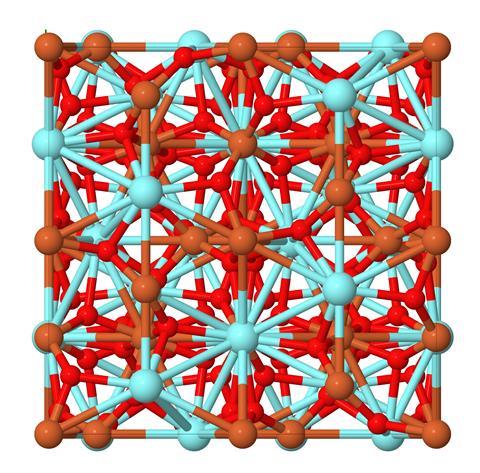
Its magnetic behaviour is down to the two different sites occupied by iron in the enormous 160 atom unit cell of the crystal structure. Based on the structure of naturally occurring garnets, mixed metal silicates, YIG instead has two corner-sharing FeO₆ octahedra and three FeO₄ tetrahedra; the Fe³⁺ ion has five unpaired electrons and those in the octahedral and tetrahedral sites order antiparallel. The greater number of tetrahedral sites create a net magnetisation – known as ferrimagnetic ordering.
Its superior magnonic behaviour is linked to its complex structure which suppresses spin–orbit interactions that would usually cause magnon damping, which is two orders of magnitude less than in the next best alloys. ‘Once you start this spin wave or coherent magnon, it lasts for a very long time [microseconds] and travels for a distance of millimeters,’ says physicist Xiaoyang Zhu, from Columbia University in New York, US.
But it’s also difficult and expensive to make. To create an ordered lattice it must be grown at high temperatures on a single crystal substrate of gadolinium gallium garnet (Gd3Ga5O12). And being an insulator makes integration with CMOS electronic devices difficult.
Organic advantages
While magnonics researchers have largely looked to inorganic materials, Miller has been developing organic polymer-based alternatives. In 1991 he synthesised the first room temperature stable organic-based magnetic polymer, containing the large tetracyanoethylene (TCNE) anion. The extra electron is delocalised over all 10 atoms which is ‘the key component’, says Miller. In 2018 he and his collaborators showed films of a similar co-ordination polymer V(TCNE)2 could generate and transport magnons. The polymer is not crystalline so its structure is not fully understood but Miller thinks the three vanadium unpaired electron spins sit antiparallel with the two TCNE spins, leaving a net magnetic moment which exists well above room temperature (up to about 127°C).
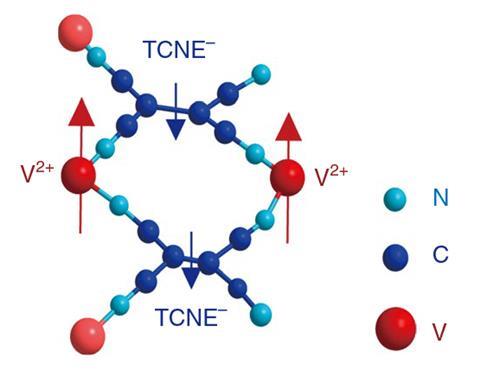
Compared to YIG, these films are easy to make by chemical vapour deposition. ‘A vanadium source on one side, TCNE on another side, they’d meet in the gas phase, and they coat everything with this black, magnetic material,’ says Miller. The main limitation is the polymer’s air sensitivity, but the films can be protected with a gold coating.
Its magnonic performance is comparable to YIG, according to Miller, including its ability to transfer the spin-wave into a detectable current in a non-magnetic conductor like platinum (known as spin-mixing conductance). So could it give comparable performance in the magnonic devices Chumak has designed? ‘My guess is we would be in the ballpark,’ say Miller. ‘We could fabricate it a lot easier … we can do it on many other substrates, there’s no limitation.’
Enter anti-ferromagnets
There is another class of materials that until recently people have ignored that can support magnons – anti-ferromagnets. In these materials spins align anti-parallel, with equal numbers of up and down spins such that the net magnetisation cancels out. This means there is no magnetic field to cause interference and so increases the density of information storage and transport. Gubbiotti says many anti-ferromagnetic materials also produce higher frequency magnons that would allow data to be transported at an increased speed.
‘More and more people are now looking at anti-ferromagnets as potentially a revolutionary kind of magnetic material,’ says Columbia University chemist Xavier Roy who has collaborated with Zhu in designing anti-ferromagnetic magnonic materials. Six years ago they set out to look for anti-ferromagnetic semiconductors that could allow them to more easily integrate these materials into current semiconductor devices. ‘Turns out there’s a huge library [of structures created] by materials chemists and inorganic chemists, over decades, dating back all the way to 1800s,’ says Zhu.
Roy eventually discovered chromium sulfide bromide (CrSBr), which had been first synthesised by German chemist Johannes Beck in the 1970s, who even shared lab-book photocopies of the original synthesis. In the end Roy found a new way to make very pure centimetre-sized crystals, starting by synthesising chromium tribromide. ‘It’s actually now a worldwide phenomena with at least 100 laboratories looking into it.’ says Zhu.
![]()
CrSBr is a layered structure with weak van der Waals interlayer bonding and strong in‐layer bonding. ‘You have planes, essentially Van der Waals sheets of chromium sulfide, [in] a buckled rectangular lattice that is then sandwiched between two planes of bromine above and below,’ Roy explains. The spins in each chromium sulfide layer are ferromagnetically ordered, but each layer is antiparallel (known as an A-type anti-ferromagnet).
One of the drawbacks with anti-ferromagnets is finding a method to detect and manipulate the magnon without any induced magnetic field to detect. Even with YIG, the magnons are detected in the microwave region which makes it hard to miniaturise. Zhu and Roy discovered that the semiconducting properties of CrSBr could couple to the magnon. They create optically excited electron–hole pairs (excitons) which then emit light in the near IR. This makes it possible to probe the magnetic behaviour with optical spectroscopy rather than complex microwave devices.
Their potential ease of study and use has accelerated the search for iso-structural compounds that may have improved magnonic properties. But ‘it turns out that’s a pretty special compound’, says Roy. He has tried swapping the bromine to chlorine or the sulfur to selenium but they can’t improve on CrSBr. It has a strong covalent nature which supports its semiconducting behaviour compared to some of the more ionic alternatives. It also has a relatively high temperature of magnetic ordering, although at about 130K this is still well below room temperature.
One potential way to improve its magnetic properties is through doping. ‘We recently showed that you can intercalate CrSBr and this increases the magnetic ordering temperature by almost 80K,’ says Roy. He used tetrahydrofuran to expand the distance between layers and lithium to inject electrons which strengthens the magnetic ordering. At this stage the material switches to a ferromagnet and starts to behave like a one-dimensional structure magnetically and electronically, forming charge density waves. ‘Instead of just spreading over the whole material, [the additional electrons] start bunching up in certain regions and forming these density waves,’ says Roy, He expects to see a new kind of magnon associated with this new state, but says they haven’t yet confirmed this.
Altermagnets offer the best of both
CrSBr isn’t the only anti-ferrimagnetic candidate. Roy says there is still a lot of interesting chemistry to discover. Other candidates include transition metal thiophosphites (MPSₓ), which also have layered , van der Waals structures.
Altermagnetic materials are now a very hot topic
Miller is also on the lookout for new organic anti-ferromagnets that show magnonic behaviour. He has already studied some layered manganese TCNE structures, similar to V(TCNE)2. They form weak anti-ferromagnets with each layer of manganese and TCNE magnetically ordered, but sitting antiparallel to the next layer, separated by non-magnetic bridging ligands such as cyanide and octa-cyanobutadiendiide. Making those materials into thin films has been the biggest challenge so far says Miller.
The best magnonic materials may end up coming from a new class of magnetic materials, only defined in 2024. ‘Altermagnetic materials are now a very hot topic,’ says physicist Helena Reichlova from the Institute of Physics of the Czech Academy of Sciences in Prague. Altermagnets combine some of the properties of ferromagnets with some of anti-ferromagnets; ‘they are a sort of mixture of both’ says Reichlova, who is studying these materials for use in magnonics.
Like anti-ferromagnets they have alternating spins and can efficiently propagate magnons at relatively high speeds, potentially providing faster transmission of information. But their behaviour is dependent on the direction of the magnetic field applied and whether the spins process in a clockwise or anticlockwise direction. This is due to the different symmetries of the two sub-lattices containing the up and down spins which means they are not energetically degenerate and split when an external magnetic field is applied. So the magnonic response will differ with the direction of magnetisation. The spin splitting means they share some characteristics with ferromagnets and commonly retain these properties well above room temperature, which is not the case for anti-ferromagnets like CrSBr.
‘In altermagnets, we can show that depending on which crystal direction we look at, we will have a different magnon. So we will have another degree of freedom for our magnonic devices,’ says Reichlova. Plus, the finding has opened up a larger group of insulating materials, whose magnetic properties had been previously overlooked. Among the first to be experimentally verified are manganese telluride (MnTe) and manganese silicide (Mn5 Si3). Reichlova is also looking at hematite (Fe₂O₃) whose altermagnetic properties were confirmed in July. The biggest challenge now she says is growing thin films of high-quality crystals, but she is experimenting with methods for etching and polishing larger crystals to give an equivalent surface quality.
Neuromorphic promise
While those designing and testing magnonic prototypes are largely still using YIG, the number of potential alternative materials is starting to grow. Gubbiotti says the race is not over. He also thinks 3D nanostructures of these films will become important, to get over some of the size limitation of the current 2D films. ‘If you have spin waves that propagates in one direction it is almost impossible to bend over a 90° angle,’he says. ‘If you go to the three dimensional object, bending a spin wave to the direction perpedicular to the sample surface is quite easy.’
In the meantime, Chumak is hoping magnonic spin-waves could open up new types of data processing. While the amplitude of spin-waves can be used to design systems based on binary logic, comparable to electronics, ‘when we code data in such a way, we lose so much information, like the [spin wave] phase’, says Chumak. ‘One spin wave can feel another. It changes its phase, sometimes it stops propagating, sometimes it’s reflected.’ He thinks these properties mean magnonics might be able to do better in the future. It could allow us to copy the more powerful type of processing carried out in the human brain, known as neuromorphic computing.
Chumak has already started down this route with his own processor using the principles of inverse design – training the machine to create a desired output, rather than starting with a known input. ‘We apply a non-uniform magnetic field, so you can create very complicated patterns,’ he explains. The field is generated from 49 separate current loops, which together produce thousands of unique and complex fields to create and manipulate the magnons forming in a YIG film. A feedback-loop algorithms then trains the processor to create its desired output. This kind of training allowed them to perform logic operations on binary data, and create other devices able to filter and manipulate output signals. His next task will be to use the magnonic processor to recognise vowel sounds, first converting them into amplitude modulated pulses.
CMOS is approaching the natural limit
For magnonic technology to take off, industry will need to get on board. Chumak says he has talked to electronic and chip manufacturers like Intel and Samsung but so far they are not showing interest. He fears a promise of 10 times less energy consumption is not yet enough to lure them away from CMOS technology. ‘100 times faster, 100 times less energy, 100 times smaller in size [and] they probably would start developing,’ he suggests. There is room to improve current materials, but he ultimately thinks there needs to be a niche application where magnonics can provide significant improvements.
Gubbiotti agrees that industry is still sceptical but warns ‘CMOS is approaching the natural limit.’ Transistors are nearing the point where they cannot be made smaller, so at some point industry will have to look for new technologies that can work faster and reduce energy consumption. ‘Up to now, magnonics is considered the most promising beyond-CMOS technology, even if there is still a lot of work to do,’ he says.
Organic magnonic materials also struggle to get buy-in from industry, says Miller, but he also thinks that could change given the right application. That might be as an interface with quantum computing, which uses superpositon and quantum entanglement to encode data and promises the ability to solve problems currently out of the reach of classical computers. One type of quantum bit (qubit) being developed uses spin to encode more than one quantum state simultaneously. Zhu says magnonics could provide a method to couple together multiple spin qubits so that information can be transferred while preserving the quantum states.
Chumak is investigating quantum magnonics, which he says requires very low temperatures – around 10mK – to access the necessary quantum properties. He says his dream is to create a processor that combines quantum and neuromorphic features which would provide a completely new technology. ‘Theoretically, it’s possible, but it sounds a little bit like science fiction at this moment.’
But first, the physicists agree, to make progress with magnonics is going to need chemists. ‘You can only do physics and engineering if you have the materials,’ says Zhu. ‘From the chemistry perspective, I think it’s a very nice playground,’ says Reichlova. Given the novelty of altermagnetism she says it’s now important to study the crystal and magnetic structures of many of the materials that could provide these superior properties. ‘If we can figure out the materials side of things and find ways to read and write information in these magnonic material, then we would be able to go faster, make [processors] smaller and use less energy,’ says Roy. ‘We’re not there yet, but there’s a lot of interesting potential.’
Rachel Brazil is a science writer based in London, UK




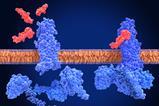


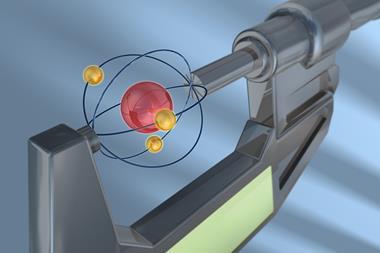

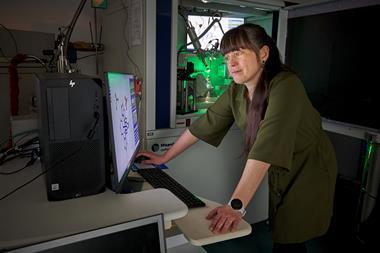








No comments yet